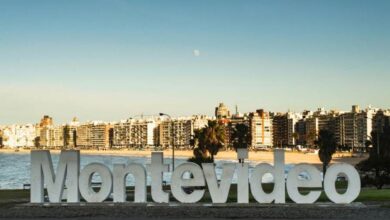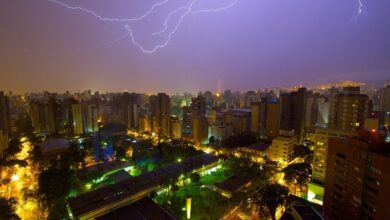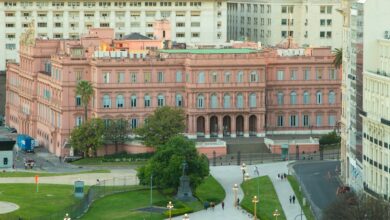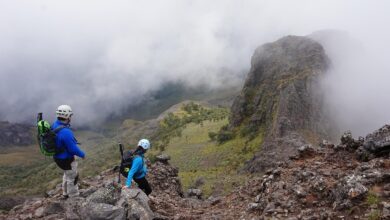A Brief Guide to Starting Out in Sailing
Below is a short guide to taking up sailing, discussing some of the things you need to know, providing tips on how to get started and discussing some of the best destinations to go sailing.

Amanda Walters
Escucha este artículo
Sailing has become immensely popular in the last few years. Flexible working times have created more opportunities for people to get away from their office desks and spend more time in the outdoors. Many do this in the form of sailing and, in fact, manufacturers in the sailing industry have been struggling to keep up with demand.
But getting outdoors is just one reason a person might take up sailing. Sailing allows you to learn new skills. You can visit several different places in a short space of time and meet some amazing people. Of course, sailing gives you the chance to escape from city hustle and bustle, enjoy some solitude and just dedicate sometime to yourself, too.
Below is a short guide to taking up sailing, discussing some of the things you need to know, providing tips on how to get started and discussing some of the best destinations to go sailing.
Read also: 5 Important Reasons to Have a Will
What to know before you take up sailing
As much as you might like to just jump in a boat and sail off into the sunset, there are some things to know before you do hop on board and start living that dream.
How a sailboat works
Knowing how a sailboat works will help you to control the boat instead of just sailing in the direction the wind wants you to:
-
When the wind blows over the sail, it creates high pressure on one side and lower pressure on the other side.
-
These pressures combine and form a forward force.
-
The wind forms a drag as it continues.
-
The keels on the sailboat go under the boat so that it can move forward.
What to wear
When it comes to sailing, you should wear clothing in line with the climate and vessel. Standard gear, however, consists of sturdy shoes, a waterproof outer and warm layers. You should also have a buoyancy aid, a full-length wetsuit and safety jackets. It’s best not to go for expensive brands when you’re starting out. Opt for cheaper ones instead.
Renting is cheaper
Although rental prices may vary, chartering a yacht is generally cheaper than buying one, so you might prefer to do this chartering a boat through a website such as borrowaboat.com. Renting is generally cheaper because you don’t have to worry about dock costs or maintenance costs (although smaller sailboats are relatively inexpensive to maintain).
Skippers are expensive, but you’ll need one initially
If you don’t know how to sail or if you’re a newbie, you’re going to need a skipper. This will be expensive, but it will allow you to sail more safely until you’ve become more experienced with a boat. When you’re hiring a skipper, you’re hiring their experience and know-how. They’ll understand weather conditions, the local waters, the local culture and more. They’ll ensure both you and the boat are safe.
Tips on getting started
Sailing is a thrilling past-time. Here are some tips to help you get started if you’ve decided to get some regular time out on the water:
Learn from a certified instructor
Your friends might already know how to sail, but that doesn’t mean they’ll be good instructors. Take a course with a qualified instructor. They’ll teach you correct safety techniques as well as the ins and outs of sailing.
Don’t be afraid
Sailing may feel daunting, but just a few weeks of lessons will put you much more at ease. You’ll need to know three things before you take your boat out:
-
Which direction the wind is blowing
-
How to steer your boat (which you’ll learn on a course)
-
How to trim your sail (which you’ll also learn on a course)
Make sure you can swim
Anything can happen when you’re out on the water, so you should make sure you know how to swim. You don’t have to be an exceptionally strong swimmer, though.
Best sailing destinations
There’s a world out there to see and, once you’ve taken your lessons and got some experience under your belt, why not venture out and see more of it? Here are some amazing destinations:
Turkey
Turkey is a dream for sailing and one its finest sailing destinations is Bodrum. From this resort, you can hop over to harbours such as Gumusluk, to Cokertme and other small bays with wooden jetties or to the delightfully remote Amazon Creek.
Croatia
The Croatian coastline is adorable and offers plentiful sailing opportunities. The Dalmatian coast south of Split rewards you with the islands of Brac, Hvar, Vis and Korcula, spoiling you with everything from quiet coves to more buzzy cosmopolitan locations. However, the jewel in Croatia’s sailing crown is Dubrovnik, which is a UNESCO World Heritage site and is a must not just for sailing fans, but also Game of Thrones ones.
Antigua and Barbuda
Out in the Caribbean, Antigua and Barbuda are pure bliss. Antigua’s warm, gentle winds, turquoise waters and gorgeous anchorages are enough to enrapture any sailor. Meanwhile, Barbuda, just 40 miles away, spoils you with a gentle pace, splendid opportunities for snorkelling and, in generally, a relaxing remoteness from it all.
Sailing is a marvellous hobby. Once you’ve taken a few lessons and been out on the water, you’ll soon feel the sailing bug bite you. Make the most of this urge and use your freshly developed skills to get out on a boat and experience some of the world’s best sailing destinations.




